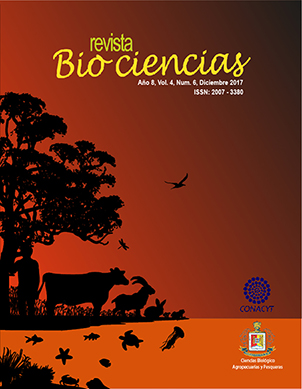Abstract
Oceanographic conditions of the continental shelf in front of the State of Nayarit were analyzed, bases on the satellite information of chlorophyll (CLO) concentration and sea surface temperature (SST). Combined data from different remote sensors were used to achieve long series of time, which were previously compared. For CLO, data of the missions SEAWIFS (1997-2009) and MODIS-AQUA (2002-2013) were combined, while for TSM, data from AVHRR (1985-2009) and MODIS AQUA (2002-2013) were combined. To analyze the variability within the annual scale, two techniques were analyzed, the harmonic adjustment method and the climatological averages for both temporal series. Our results indicate that temporal series of CLO on the continental shelf cannot be analyzed by harmonic adjustment. Hence seasonal variability must be calculated through climatological averages. While for SST, harmonic adjustment for the study region presented values higher than 90 % of the variance explained, therefore it is a good estimate of the seasonal variability. Our results set methodological basis for interannual variability studies and tendencies associated to long period processes in the oceanographic conditions of the continental shelf in front of the state of Nayarit.
Revista Bio Ciencias by Universidad Autónoma de Nayarit under Creative Commons Attribution-NonCommercial 3.0 Unported License.
Based on work of http://biociencias.uan.edu.mx/.
Further permits not covered by this licence can be found at http://editorial.uan.edu.mx/index.php/BIOCIENCIAS.






